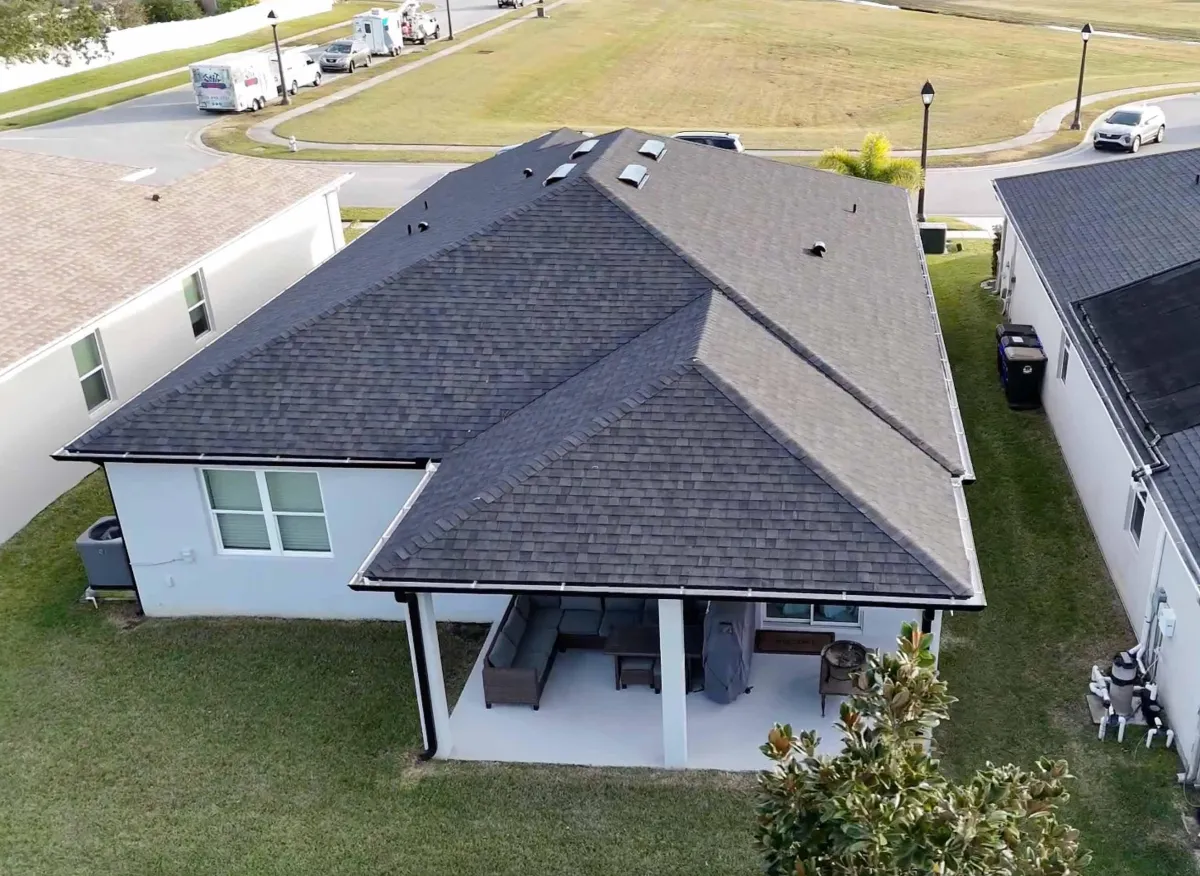Roofing Tips, News & Advice from Mega Roofing

How to Know If You Need Roof Repairs or a Full Replacement in Florida
When a Leak Appears or Shingles Go Missing, What Should Florida Homeowners Do?
If you’ve noticed a leak after a heavy Florida downpour or found cracked shingles scattered in your yard after a storm, you're likely asking the same question many homeowners do:
Do I repair the roof — or is it time to replace it entirely?
It's not always an easy call. In Florida, roofs age faster due to the heat, humidity, and frequent hurricanes. That makes it even more critical to know when a repair is enough and when it’s smarter (and more cost-effective long term) to invest in a full replacement.
This guide will walk you through how to tell the difference — using real signs, roof lifespan expectations, insurance insights, and expert tips from the Florida roofing field.
Repair or Replace: What’s the Difference and Why It Matters in Florida
Query Semantics:
"Repair vs replace roof" doesn’t just mean cost — it’s a decision about longevity, safety, insurance, and return on investment.
Roof Repairs generally address:
Small, localized issues (a few missing shingles, flashing problems)
Minor storm damage or debris impacts
Isolated leaks without structural issues
Roof Replacements are required when:
The roof has reached its lifespan (often shorter in Florida due to heat and hurricanes)
There’s widespread damage, curling shingles, or sagging
Multiple repair attempts have failed to stop leaks
The roof fails inspection or is flagged by insurance
Florida Factor: Many roofs in Florida need replacement earlier than the national average — especially after a few hurricane seasons.
Query Stack: Key Signs Your Roof Might Be Beyond Repair
To help homeowners searching with terms like "should I replace my roof?" or "roof damage checklist", here are the top signs it’s time for a full replacement — not just patchwork fixes:
1. Your Roof Is Over 15–20 Years Old
Query Parsing:
Intent: Determine if age is enough reason to replace
Entity: Asphalt shingle roof in Florida
Type: Informational
Most asphalt shingle roofs last 20–25 years nationally, but in Florida, the intense sun and storms reduce this to around 15–18 years. Tile and metal roofs can last longer — up to 50 years — but still need inspection.
2. You See Widespread Damage
If large areas of your roof have:
Curled or missing shingles
Bald spots (granule loss)
Soft decking or sagging areas
…it likely indicates system-wide failure, not just isolated damage.
3. You Have Ongoing Leaks After Storms
Query Semantics:
When people search “roof leaking after every storm”, they’re often facing hidden underlayment or decking issues — not just a one-time problem.
4. Moss, Mold, or Algae Growth
Florida humidity can lead to organic growth that damages shingle layers and seeps into the structure. A sign your roof is degrading from the inside out.
5. Insurance Flagged the Roof
If your provider suggests replacement (often after inspections or when filing a claim), it’s time to act. Many won’t cover damage if the roof is “past useful life.”
Decision Guide: Should I Repair or Replace My Florida Roof?
Let’s break down key questions that homeowners often type into Google — and answer them based on Florida-specific conditions:
Should I repair or replace my roof after a storm?
If the damage is minor (one section, a few shingles), a repair might be fine. But if 50% or more of the roof is impacted, insurers often recommend a full replacement.
Is it cheaper to repair or replace my roof in Florida?
Repairs are cheaper short-term, but if you’re making repeated fixes, the costs add up. Replacing early can save you from water damage, mold remediation, and higher premiums.
How long should a roof last in Florida?
Shingle Roof: 15–18 years
Metal Roof: 30–50 years
Tile Roof: 25–40 years
Salt air, heat, and hurricanes shorten these numbers significantly.
Can I replace just one side of my roof?
Yes — but color matching is hard, and uneven wear can affect resale value. Most Florida roofing contractors advise against partial jobs unless it’s purely cosmetic or budget-limited.
Frequently Asked Questions from Florida Homeowners
Q: How do I know if my roof damage is covered by insurance in Florida?
A: If a hurricane, hail, or fallen tree caused the damage, it’s likely covered. But damage from wear and tear or poor maintenance typically isn’t.
Q: Do I need a permit to replace my roof in Florida?
A: Yes. Counties like Osceola (home to St. Cloud) require permits for roof replacements. Mega Roofing handles the permitting process for you.
Q: How long does roof replacement take in Florida?
A: Most jobs are completed in 1–3 days, depending on roof size and weather.
Q: Should I wait for storm season to end before replacing my roof?
A: No — delaying increases the risk of leaks and interior damage. Install now, and rest easy when storms hit.
Q: What are the best roof types for Florida homes?
A: Metal roofs are highly durable against wind and rain. Architectural shingles are budget-friendly but offer less storm protection than tile or metal.
Conclusion: Don’t Wait for More Damage — Get a Professional Roof Inspection Today
Understanding whether you need a roof repair or full replacement can save you thousands and protect your home from the next Florida storm. The key is knowing the signs, understanding your roof’s age and condition, and talking to a trusted roofing expert.
Mega Roofing serves homeowners and businesses in St. Cloud and nearby Florida communities with honest inspections, clear quotes, and fast, high-quality workmanship.
Our Services
Helpful Links
LICENSE NUMBER CCC1332144
© 2025 All Rights Reserved | Mega Roofing
